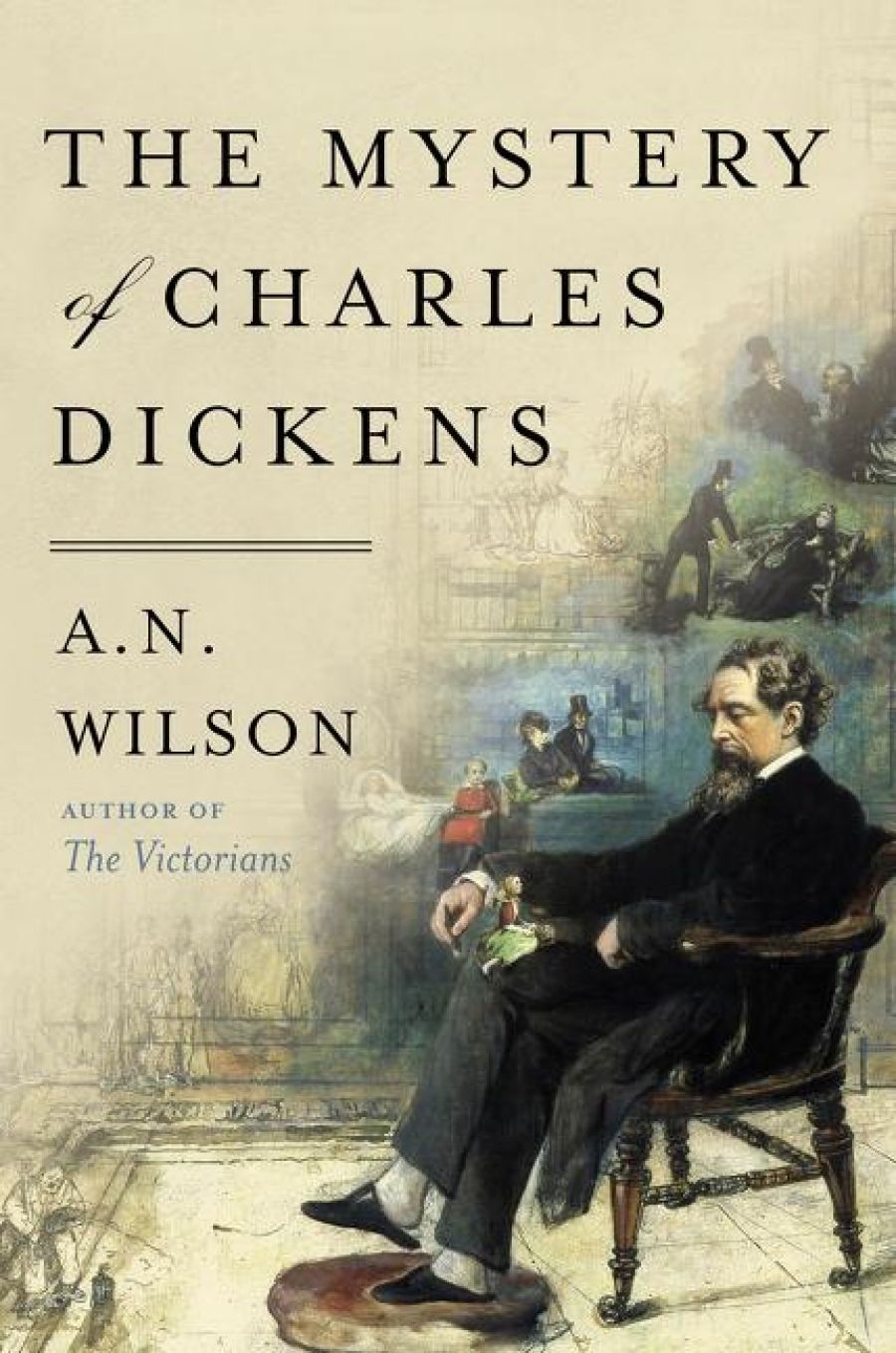
- Free Article: No
- Contents Category: Literary Studies
- Review Article: Yes
- Online Only: No
- Custom Highlight Text:
This is a remarkable book – not so much for its subject matter as for the intensity of the passionate involvement of one writer with another. From the beginning, it is clear that this is not a conventional biography or book of criticism. A.N. Wilson approaches Charles Dickens through seven different mysteries about his life. The principal one, which underlies the whole book, is the mystery of what makes Dickens such an utterly compelling writer.
- Grid Image (300px * 250px):

- Book 1 Title: The Mystery of Charles Dickens
- Book 1 Biblio: Atlantic Books, $39.99 hb, 358 pp
- Book 1 Readings Link: booktopia.kh4ffx.net/VryDj
That Wilson is passionately involved in the search for an answer to his underlying question is increasingly clear as the book continues, but it becomes overt and explicit in the last chapter, ‘The Mystery of Charles Dickens’. Here, Wilson provides a truly horrifying account of his own experiences as a young boy at Rugby, only relieved by his English teacher’s inspired acting out of passages from Dickens’s novels. Of course, even this intensely personal explanation of Dickens’s importance to Wilson does not provide an answer to the mystery of why Dickens is so compelling as a writer. Nor does Wilson’s answer, at one point in the book, that Dickens is a mesmerist, or any of the other partial explanations offered along the way, although the one that gets closest is that it is to Dickens’s voice that we respond. Even at the end of the book the central mystery remains a mystery.
 Dickens in New York, circa 1867–1868 (Jeremiah Gurney/Heritage Auction Gallery)
Dickens in New York, circa 1867–1868 (Jeremiah Gurney/Heritage Auction Gallery)
As Wilson claims, Dickens is a writer sui generis and there is thus no point in thinking about how other writers affect us in order to understand how Dickens does it. He does it in his own unique way. To get to the heart of how Dickens works his magic on us, Wilson turns both to his writing and to his life. Like others, he finds a source for Dickens’s work in the people, places, and events of his life, but he goes below the surface to the springs of emotion that they aroused in Dickens and which fed his creativity: he insists that there is no simple relocation into the novels, so that, to take one example, Mrs Clennam is not Dickens’s mother but a new creation, even though Dickens could only create her because of his experience of his hated mother. In this way, as Wilson points out, Dickens’s novels are actually full of the mysteries of his life but, because they are transmogrified into something else, they remain safely hidden in plain sight.
There is, of course, an abundance of literature on Dickens and his writing, and Wilson uses it extensively, with generous acknowledgment. Drawing on this and on his own experience of a lifetime of reading Dickens, Wilson explores the central question of Dickens’s power as a writer through his seven mysteries, beginning with the relationship with the much younger actress Ellen Ternan, something Dickens desperately wanted to keep a secret. Next comes his childhood with its up-and-down movement: on the one hand, an idyllic early life in Chatham and Rochester; on the other, the blacking (shoe polish) factory, long recognised as a scarifying experience crucial to Dickens’s formation as a man and as a writer. The following two chapters deal with his marriage (how could he be so unutterably cruel to a woman he initially loved, expelling her from his home and forbidding his children to see her?) and his charity work (how could he combine the enormous energy he put into practical acts of kindness with harsh and unforgiving attitudes towards ‘ruffians’?).
The next mystery is that of his immensely successful public readings: what drove him to enact again and again the horrific murder of Nancy in Oliver Twist? Oddly, the next chapter, on The Mystery of Edwin Drood, is the least satisfactory, even though it is the only one explicitly related to mystery through Dickens’s own words. The final chapter, as already noted, deals directly with Wilson’s own reaction to Dickens. It also attempts to place his writing within three broad categories of writers, but this attempt only reveals a ‘tangle [that] needs a little bit of teasing out [which] this book has tried to do’. In the end, any attempt to fully categorise Dickens will always fail. Why, after all, would we expect a writer sui generis to be classifiable? The attempt to understand his power is more illuminating than any overall solution of the mystery.
Like Dickens’s own work, this is a masterly performance which draws deep on the author’s own feelings and experiences. It is a book which will make us lovers of Dickens think again about the mysterious power his writing has for us. One hopes it will also bring others to experience that same power.


Comments powered by CComment